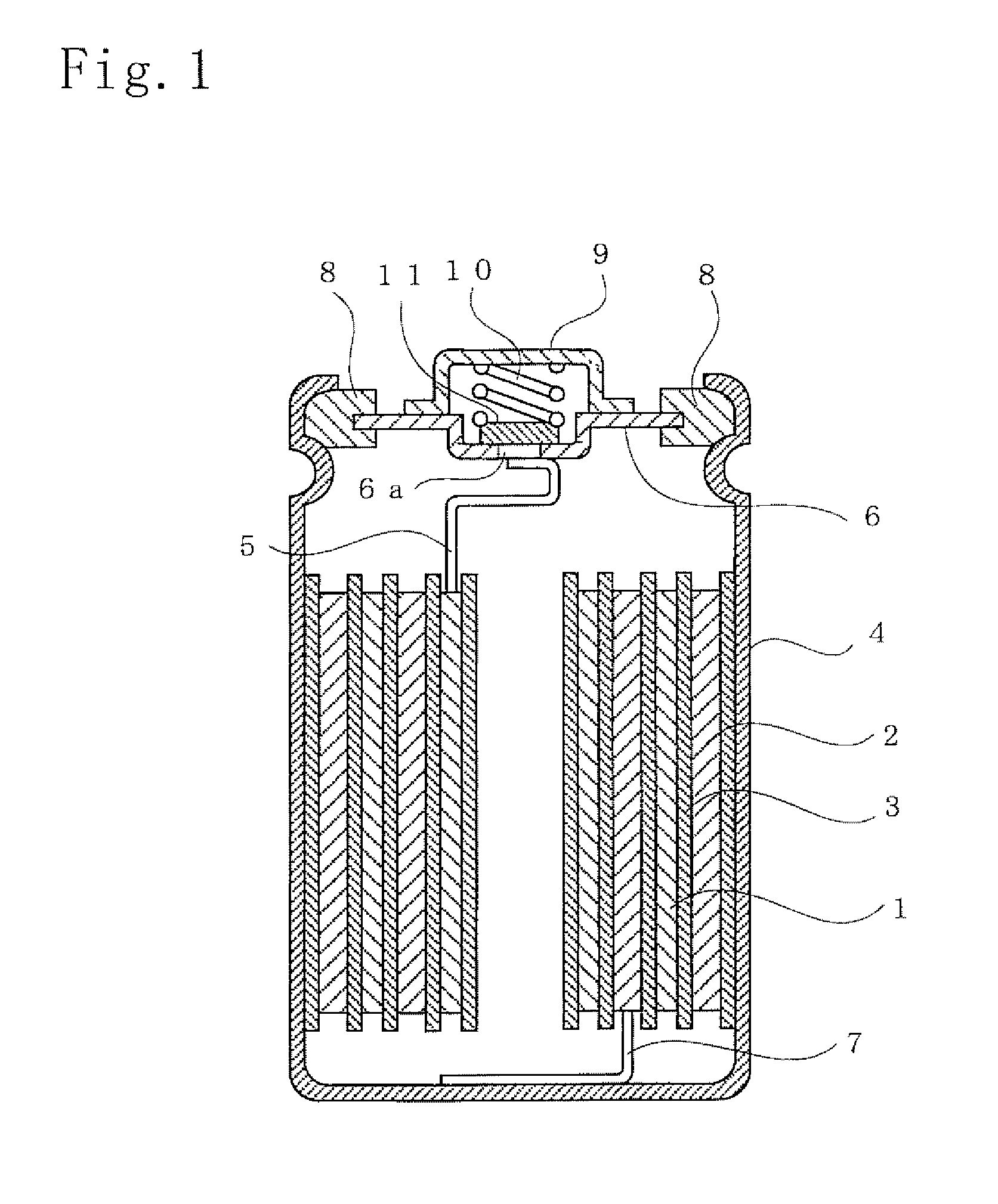Hydrogen-absorbing alloy, fabrication method thereof and alkaline storage battery
a technology hydrogen-absorbing alloy, which is applied in the direction of nickel accumulators, other chemical processes, cell components, etc., can solve the problem of insufficient characteristics and achieve the effect of improving the cycle life of alkaline storage battery, high hydrogen-absorbing capability and enhancing durability of hydrogen-absorbing alloy
- Summary
- Abstract
- Description
- Claims
- Application Information
AI Technical Summary
Benefits of technology
Problems solved by technology
Method used
Image
Examples
example 1
[0044]An alkaline storage battery of Example 1 utilized a hydrogen-absorbing alloy fabricated in the following manner as a negative electrode active material of a negative electrode. Mg, Ni and Al as well as rare-earth elements La, Ce and Nd were mixed together to produce a predetermined alloy composition, and the mixture was then melted by a high frequency induction melting furnace in an argon atmosphere and then poured into a mold. After that, the resultant mixture was cooled to a room temperature to prepare a hydrogen-absorbing alloy ingot. The composition of the hydrogen-absorbing alloy thus prepared was analyzed by an inductively-coupled plasma optical emission spectroscopy (ICP). As a result, the composition of the hydrogen-absorbing alloy was found to be (La0.3Ce0.4Nd0.3)0.85Mg0.15Ni3.3Al0.2. Further, the melting point of the hydrogen-absorbing alloy was determined by a differential scanning calorimeter (DSC). As a result, the melting point thereof was 1015° C.
[0045]Then, the...
example 2
[0064]An alkaline storage battery of Example 2 utilized a hydrogen-absorbing alloy fabricated in the following manner as a negative electrode active material of a negative electrode. Mg, Ni and Al as well as rare-earth elements La and Sm were mixed together to produce a predetermined alloy composition, and the mixture was then melted by a high frequency induction melting furnace in an argon atmosphere and then poured into a mold. After that, the resultant mixture was cooled to a room temperature to prepare a hydrogen-absorbing alloy ingot. The composition of the hydrogen-absorbing alloy thus prepared was analyzed by an inductively-coupled plasma optical emission spectroscopy (ICP). As a result, the composition of the hydrogen-absorbing alloy was found to be La0.65Sm0.15Mg0.20Ni3.40Al0.20. Further, the melting point of the hydrogen-absorbing alloy was determined by a differential scanning calorimeter (DSC). As a result, the melting point thereof was 980° C.
[0065]Then, the hydrogen-ab...
PUM
| Property | Measurement | Unit |
|---|---|---|
| thickness | aaaaa | aaaaa |
| thickness | aaaaa | aaaaa |
| temperature | aaaaa | aaaaa |
Abstract
Description
Claims
Application Information
 Login to View More
Login to View More - R&D
- Intellectual Property
- Life Sciences
- Materials
- Tech Scout
- Unparalleled Data Quality
- Higher Quality Content
- 60% Fewer Hallucinations
Browse by: Latest US Patents, China's latest patents, Technical Efficacy Thesaurus, Application Domain, Technology Topic, Popular Technical Reports.
© 2025 PatSnap. All rights reserved.Legal|Privacy policy|Modern Slavery Act Transparency Statement|Sitemap|About US| Contact US: help@patsnap.com



